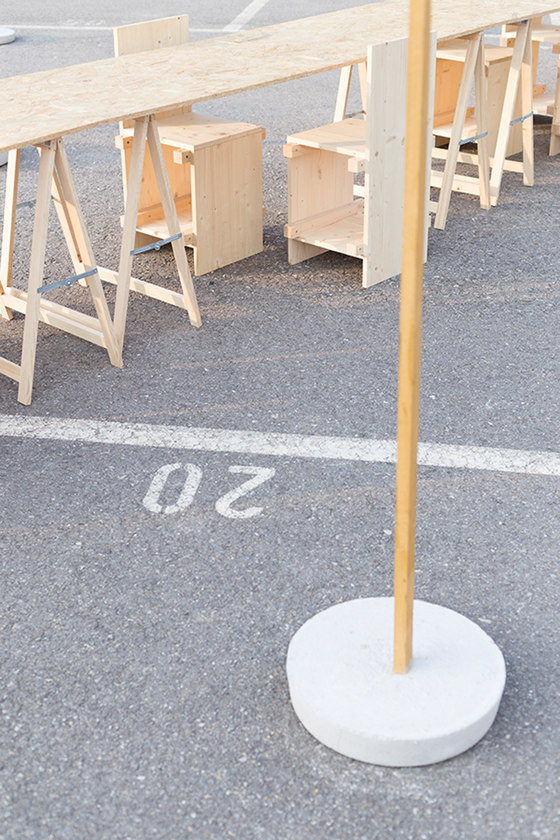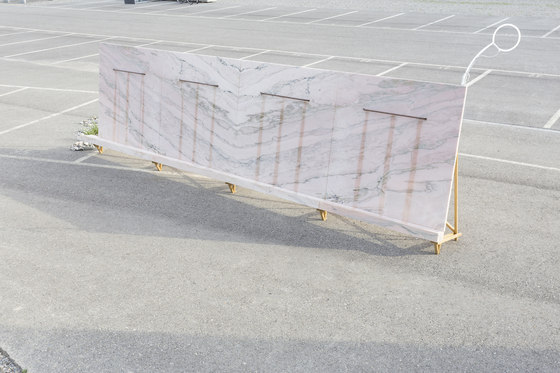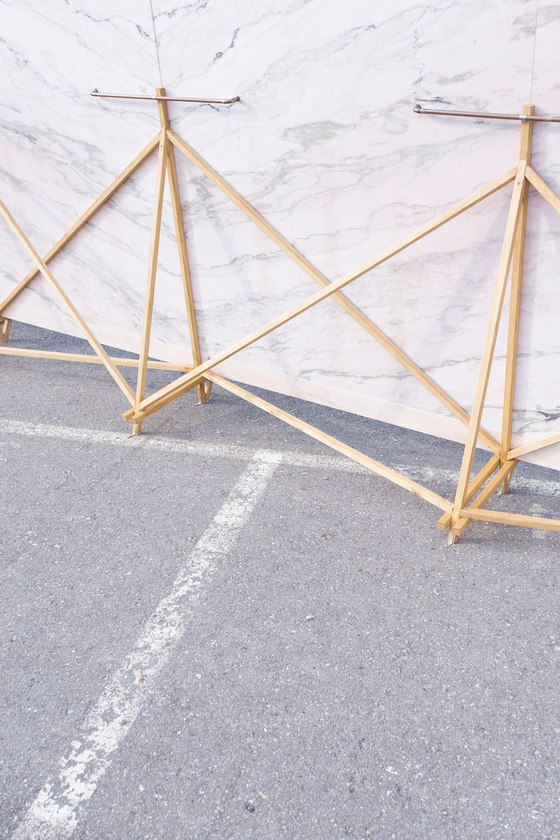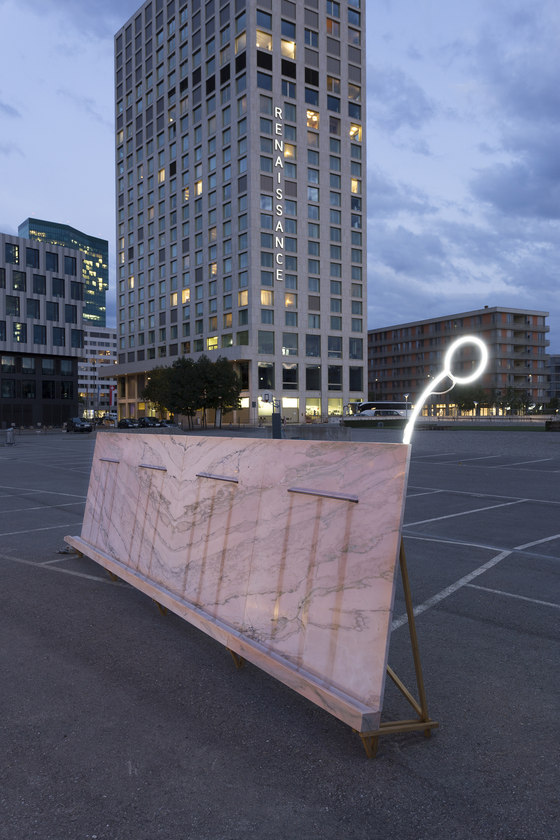Common Ground featuring Fountain 2017 by Bureau A
'The spatial common is temporary, more a moment than a space (a moment of space). More a use than a property’
Lieven de Cauter, Shared Space, Prague, 3rd April 2014
The commons (Allmende in Swiss-German) were lands that belonged to all members of a society. Widespread in the Middle Ages, they all but disappeared around the 18th Century under the pressures of population growth and private interest, becoming a symbol of modernity crushing the old system.
Nowadays, the commons can, in essence, be considered as places devoid of purpose, where experimental temporary activities might take place. However, city-planning’s utilitarian approach tends to forget the importance of preserving these areas. Furthermore, being inextricably linked with community, the common can also be seen as a tool to create or strengthen the identity of a neighbourhood.
Located in the heart of the new aspirational and would-be glamorous district of Zurich West, the Pfingstweid (Whitsun Meadow), is what remains of an ancient common outside the city. Here, a school is going to be built in three years’ time. In the interim, part of its plot has been entrusted to an association of private citizens for different temporary initiatives, such as urban gardening, playgrounds and art projects.
Without a definitive programme and with spontaneous, ever-changing content that lends space to creative initiatives, it is in a way ‘the last common’ in Zurich West.
The project Common Ground, curated by Silvia Converso, Michele D’Ariano Simionato and Caterina Steiner, seizes the chance of using the memory of this disappearing world as the seed for a future one. Its aim is to change the perception of the Pfingstweid, transforming it into a lively area and a meeting point for the whole quarter.
The exhibition Common Ground, taking place in the container located at the Pfingstweid, and, displaying contributions from different authors and theoreticians, represents the central core of the project. Around the container, three installations – namely XY, Arci Pentecoste and Fountain 2017, the latest work from the renowned architectural office Bureau A – interpret the notion of commons and create a spatial dialogue with the area and the neighbourhood.
The surface of Common Ground is visually depicted with XY, a set of vertical supports that draw a new grid, taking its pattern from the existing parking lot and filling the urban emptiness by introducing a human scale. Its regular structure of poles and sun sails changes the perception of the space, creating a small ‘open room’, which invites passers-by to take a seat at the pop-up bar Arci Pentecoste and enjoy its pleasant shadow with a cool refreshment. Fountain 2017, the marble pissoir by Bureau A, provocatively contributes to Common Ground in order to remind us that public space needs to preserve its public dimension as such and supports debates, allowing people to get together and meet for social, political or cultural initiatives.
Fountain 2017, by Bureau A
‘The acquisition of valuable and extensive property, therefore, necessarily requires the establishment of civil government. Where there is no property, or at least none that exceeds the value of two or three days' labour, civil government is not so necessary.
Civil government supposes a certain subordination. But as the necessity of civil government gradually grows up with the acquisition of valuable property, so the principal causes which naturally introduce subordination gradually grow up with the growth of that valuable property. (...)’
Adam Smith
The Wealth of Nations, Book 5, Chapter 1, Part 2
Bureau A installation for Common Ground explores the function of public space in order to ‘regain its original status of forum, to help the growing non-conformist crowds to reunite and express their disagreement to a controlled fate. Public space needs to stay public, open and support debate and creative proposals of any kind, whether they are social, political or cultural.’
Their installation, Fountain 2017, is a 6-metre-long pissoir of pink Portuguese marble. This Fountain of Youth, a symbol of birth and beauty, ‘cannot be filled with crystal water anymore. It is now filled with the dirt of Europe’s recent history, where wealthy countries dictate the fate of not-so-wealthy ones.
‘Europe is moving. Fast. What we thought would be a community of identities has turned into a quite competitive space dominated by financial hierarchies. The “community” follows aggressive financial trends that opposes the idea of a cultural neighbourhood where moral and ethical values are shared. The attack of countries by complex financial apparatuses as the hedge funds and the like has provoked a general disorder and a global feeling of distrust in the civic society. Greece’s debt might be saved by crowd-funding initiatives, by large numbers of anonymous international citizens trying to overrule what governments do not seem to deal with anymore: people.
‘So here’s a present, a cultural gift from one of these countries that is not doing that well to one of the rich companions of the community. In the form of a noble fountain, a classical figure of occidental culture, Lisbon sends a solid salute to rich Zurich. A contribution to its public spaces where people can meet, be revolted by whatever, play, drink, sleep, love. Anything should be possible within a public space. As a slight provocation, celebrating another almost 100-year-old fountain, Fountain 2017 sends some marble to Zurich from Lisbon, so we can all can piss on it.’
BUREAU A
Curators: Silvia Converso, Michele D’Ariano Simionato, Caterina Steiner



































